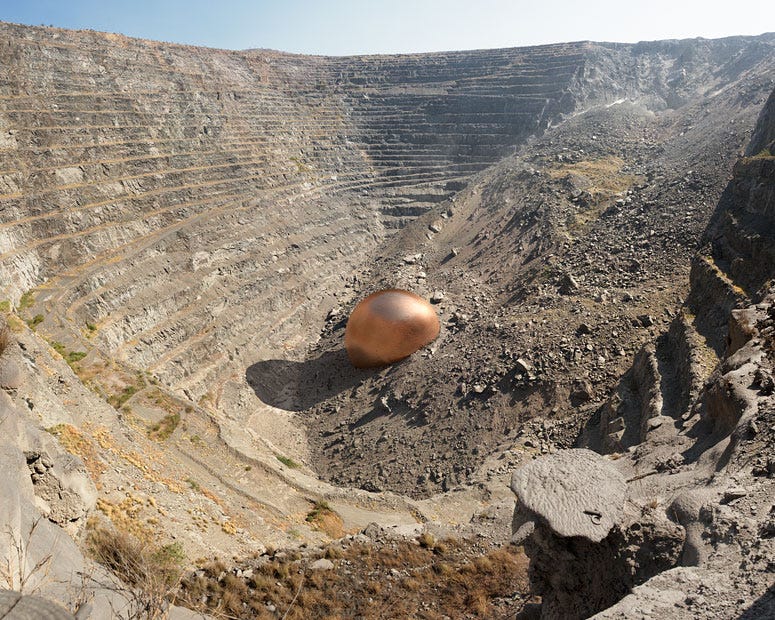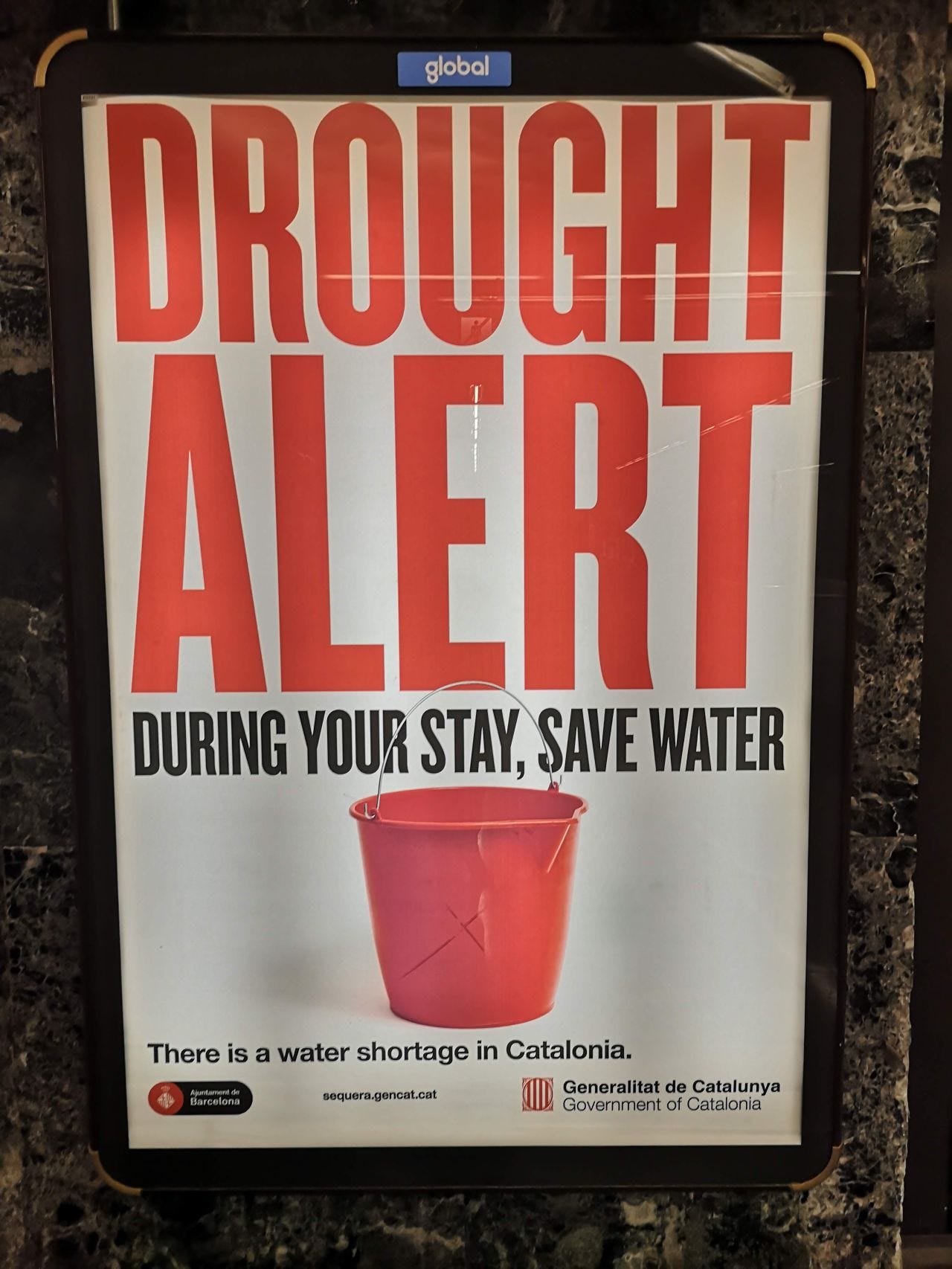The Blueprint #11
Slightly special this week. Two analysis from a collection of news: we talk about the need for better services, not better products, and designing solutions to foster resilience.
What’s The Blueprint About?
What’s The Blueprint About?
The Blueprint is a newsletter sent every 2 weeks exploring service design topics in relation with the planetary crisis and vice-versa, under 10 minutes.
If you have any questions, comments or recommendation, you can contact me at hello@sidneydebaque.com. In the meantime, bonne lecture!
Reducing our impact on the planet isn’t about better products, but about better services

2024 Circularity Gap report is out and highlights a bleak trend. In the past 6 years, we’ve consumed almost as much materials as we did during the entire 20th century. A UN report shared in The Guardian estimates this trend to continue, with the extraction of raw material to experience a 60% rise by 2060.
Instead of falling into the “green production” trap, which will increase our footprint on raw material extraction, as illustrated by the electric car example, which raw material footprint is 10x more important than conventional vehicles for production, Janez Potočnik one of the authors, calls for a change in our behaviours and usages first, accompanied by a change in technical solutions second. Fortunately, there are some move in the right directions to support an economy that follows the 3 Rs: Reduce, Reuse, Recycle.
I recently shared a link to it, but it has now been voted, a new bill in the EU is designed support the repair market. As part of the package, laws aim to cap the price of original spare part, ban software prevent repairs made by 3rd party as well as integration of 3rd party parts, extend warranty, and framework to provide a repair costs estimation. While all of these are great, I’m more focused on the services and user experience. In that regards, a central platform will be created for people to find local repair shops.
On another hand, there’s a new conversation happening around fashion. People are tracking what’s in their wardrobe, how many times they wear something. This sometimes goes as far as mapping out if they bought a garment as an impulse buy or after consideration, to see the effect it has on the number of times something is worn. This comes as a stepping stone to a rule of 5, an approach to wardrobe management by capping the number of new garments bought to 5 a year.
From a planetary crisis & service design point of view:
Just like Alexis Eyre calls out marketing to foster overconsumption, we need to look at the role of services as an enabler to this overconsumption. As explored in the news above, we need to think of supporting a circular economy. Slightly more detailed than the 3 Rs principles, Ellen MacArthur foundation has published a butterfly diagram to illustrate what processes make up a circular economy. This calls for a need to design new services, but also to redesign the existing ones in the right ways.
First, to support new behaviours. Instead of linear model of consumption, we should look at developing circular models based on usage. Businesses such as Zipcar, Rites, or Fat Llama are great examples of services designed to allow people to share products based on usage instead of owning them.
Second, to reduce services’ own impact. Services are themselves designed in a linear way. The main tool we use, the blueprint, is linear. We need to embed circularity within services themselves, for instance services like Ocado are picking up plastic bags used for the previous delivery, to use them again. Even better, services such as Farm Direct or Waitrose do not deliver in plastic bag at all and are respectively picking up the delivery box at next visit or waiting for you to unload groceries. Although, when it comes to Waitrose for instance, fruits and vegetable are wrapped in plastic bag at pick up. These examples highlight how within services, both at the front end and the back-end, we can create the right processes to reduce usage of materials.
Ultimately, the processes are designed the way they are for a specific reason. While we can change the way a service is designed to reduce its impact, it’s only by changing the business model and the logic, such as scaling and optimisation, that we can support a wider change. Services are linear because the business model is linear. And maybe by adding more friction at some points within a service, we can reduce its impact by preventing return, or excessive convenience that requires back-end system to stretch to guarantee conversions.
Tapping into services to reduce the cascading effects of the planetary crisis

News these past weeks made me think of the approach towards building resilience to prevent spiralling effects from climate disasters.
Spain is currently dealing with massive and repeated droughts, bringing water reserves to an unprecedented low. The Catalan government declared emergency measures to alleviate the pressure on the resource and support an equal share of it. Locally, the drought impacts people directly, who can’t access water at home anymore and need to get water delivered by trucks, buy bottled water directly, or can only access water at specific hours decided by the municipality. This also impact local businesses, who have to shut down or see their production reduced, either deliberately to reduce their water consumption, or by losing it. Down the line, this will have an impact beyond Spain borders, increasing food price and availability in the UK in a process called “heatflation”.
In Hawaii, The New York Times is covering the aftermaths of the fire in Lahaina, on the island of Maui. The fire killed 100 people and destroyed 2000 buildings at the time, but its impact is still being felt. Indeed, thousands of people do not still have a permanent residence. Many of them have left the island as a result to get more stability. Additionally, the rubble and contaminated soils are left vulnerable to weather and contaminating local area. For these reasons, local leaders are trying to move fast, which means cleaning the area as fast as possible. Unfortunately, this comes to the extent of finding a suitable space to safely bury contaminated materials, risking affecting local fauna, flora, residents, and economy downhill of the temporary landfill.
The School of Psychology at the University of Nottingham has published a report on the effect of the 2022 heatwave on local residents. Directly quoting from the press release: “The findings show that while the health and wellbeing of people were negatively affected, with 71% of people reporting one or more physical health impacts, 55% reporting impacts on their mental health, and 31% reporting that the heatwave affected their ability to work or earn money; people also showed remarkable levels of caring, responsibility and initiative in looking after themselves and people around them.”
And finally, a recent report from WHO in collaboration with consulting firm Oliver Wyman, and covered by Grist, estimates that by 2050 14.5 million will die of climate change, but mostly from its indirect consequences. For instance, flood can lead to landslides, crop loss, and infectious diseases. The authors identify Africa and South Asia as being key area of preoccupation due to the intensity of events, and the reduced access to supporting services such as healthcare (this is however to take with caution, as COVID-19 highlighted, Europe and North America have had the most deaths due to lack of preparedness, older population and opposition to COVID measure and vaccines). Global North countries are increasingly exposed to risks they haven’t been exposed before, such as Zika, dengue and malaria, and haven’t developed analogous experience in answering such crisis.
From a planetary crisis & service design point of view:
Rebuild by Design illustrated the cascading impact of climate event (p6), highlighting how climate hazards generate secondary hazards, themselves generating short term effects, resulting in long term ones. Far from happening in siloes, disasters are not only mortal by themselves, they also have ripple effects on physical and mental health, food, security, economy, mass migration, fauna and flora. As we’re crossing planetary boundaries thresholds, we need to design strategies to prevent spiralling effects.
As I covered in a post in September, services have the potential to help us adapt to the planetary crisis. We can define two strategies, a proactive one, about building robustness prior to events, and a reactive one, about building resilience for the aftermaths. One thing I haven’t articulated at the time of the article however, is the way something’s resilience depends on something’s else robustness. For instance, when people lose their job, they’re as resilient as the different systems and a services they tap into are robust to support that. So how do that apply to services?
We need to consider post-disaster services today. Hawaii’s fire or COVID-19 in the UK highlights how we’re bad at coming up with solutions in the aftermaths, cutting corners, coming up with dangerous stitches, which will then trigger cascading effects of their own.
We also need to change the way we inform design decisions at service level. While it’s usually not our decision to hire 10 or 12 people to perform a service for instance, we need to facilitate that conversation, and make sure we communicate the trade-offs at service level between robustness and optimisation. As Olivier Hamant explains, optimisation brings fragility. Fragility comes at costs, for people, planet, and the business. Developing robust services and systems requires us to step away from optimisation.
Other noteworthy news:
[Event] The New School India China Institute is hosting an online conference about Global South perspectives on Climate Change. The 1h30 event will bring a panel from academic and practitioners from North Africa, India, China and Columbia.
→ Register here
I’m a freelance service designer who helps public and private organisations intervene to mitigate the impact of the planetary crisis on humans and vice-versa.
You can contact me about for questions, comments or consulting at hello@sidneydebaque.com
